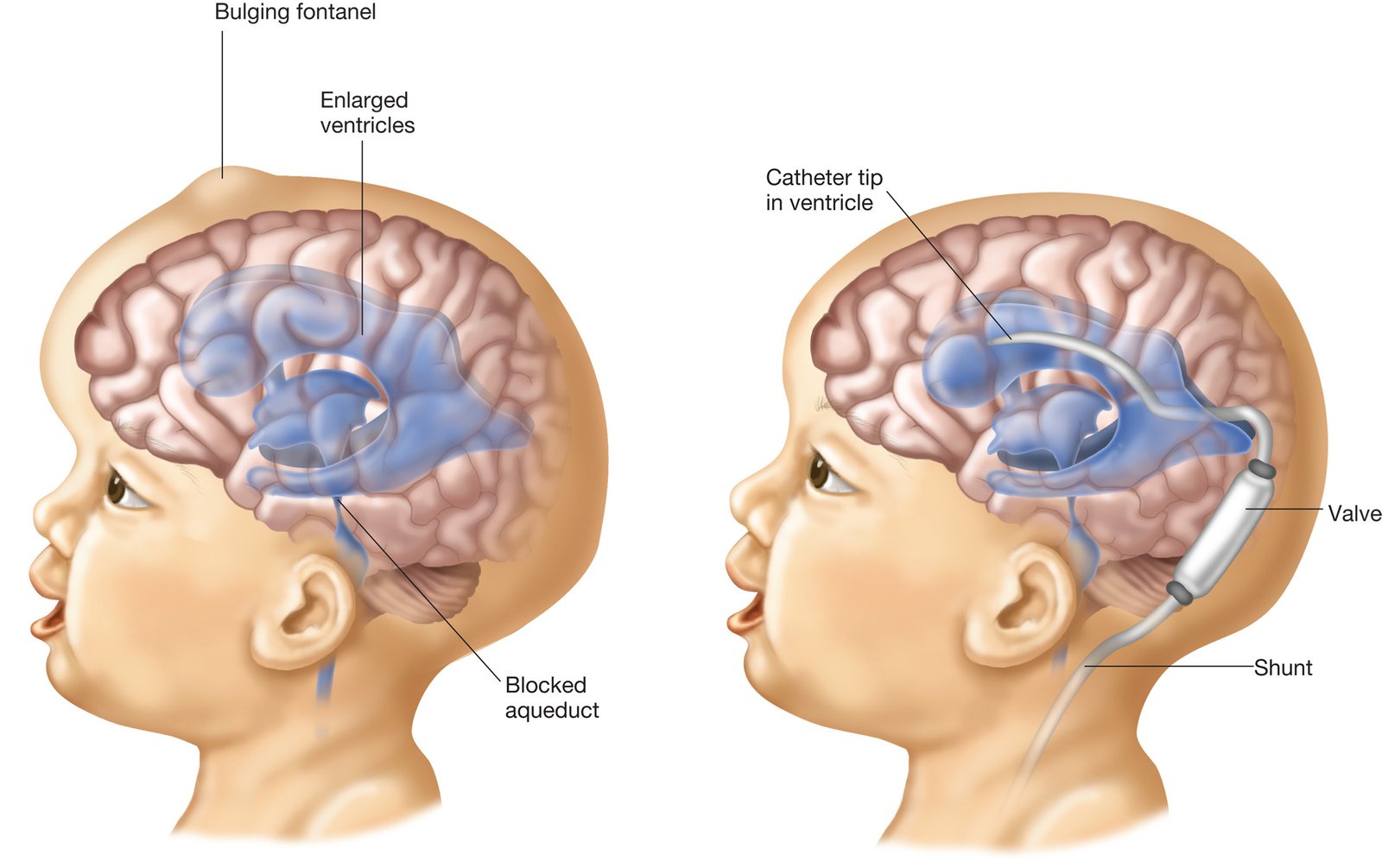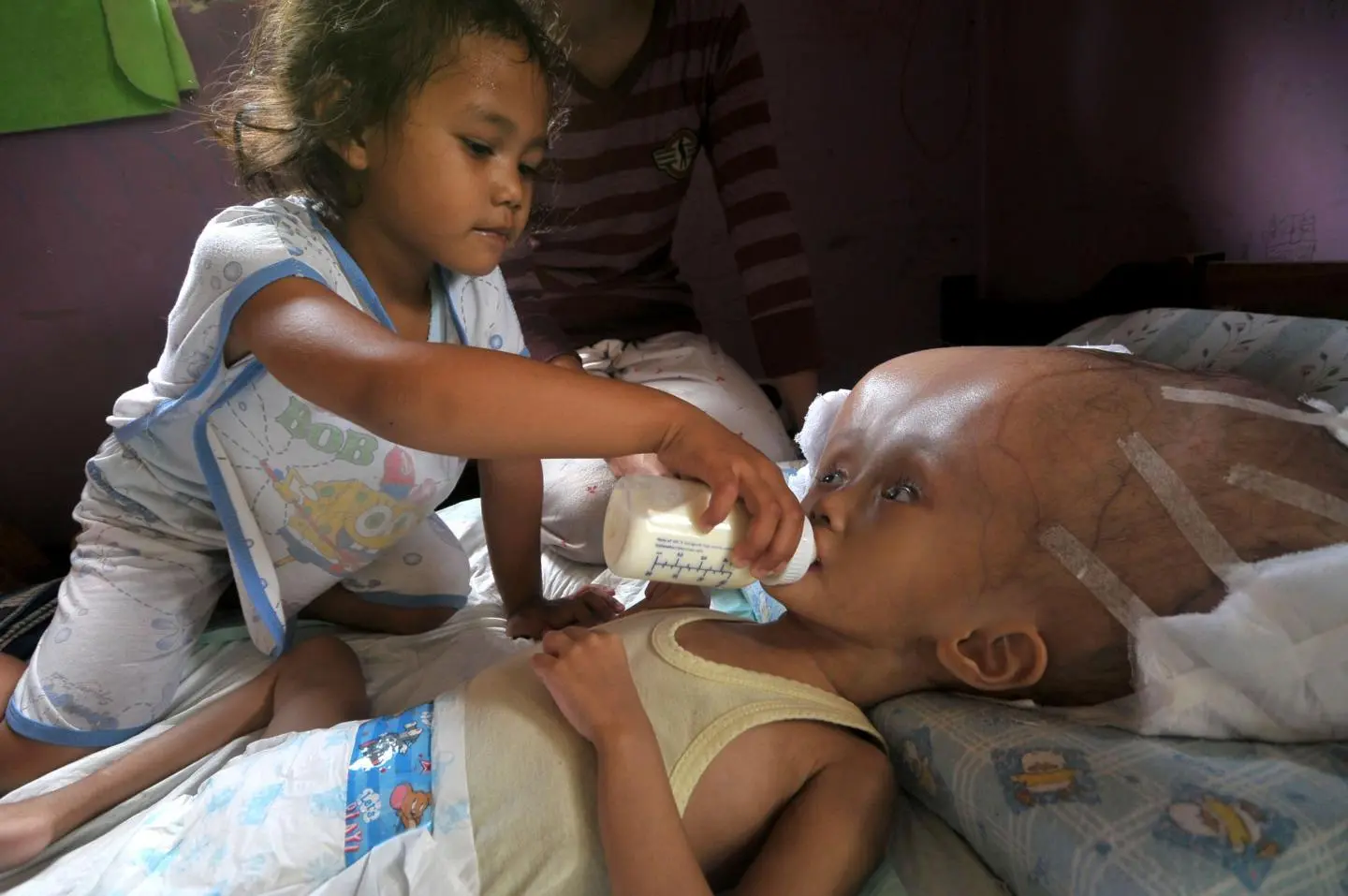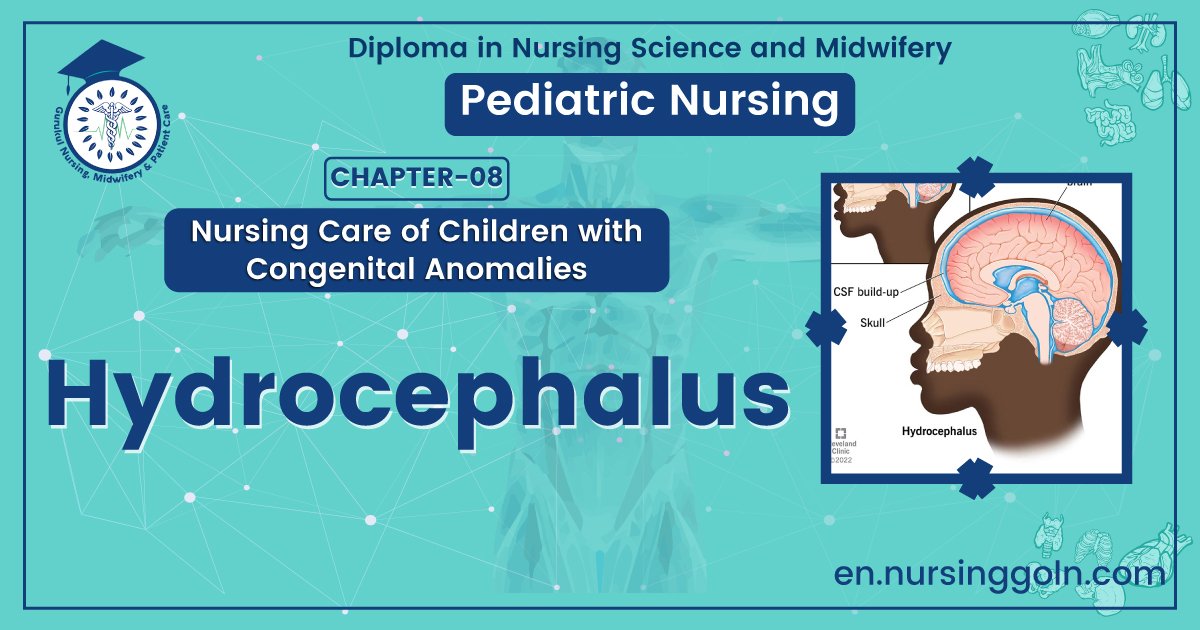Concept about Hydrocephalus – Health of the children has been considered as the vital importance to all societies because children are the basic resource for the future of humankind. Nursing care of children is concerned for both the health of the children and for the illnesses that affect their growth and development. The increasing complexity of medical and nursing science has created a need for special area of child care, i.e. pediatric- nursing.
Pediatric nursing is the specialized area of nursing practice concerning the care of children during wellness and illness. It includes preventive, promotive, curative and rehabilitative care of children. It emphasizes on all round development of body, mind and spirit of the growing individual. Thus, pediatric nursing involves in giving assistance, care and support to the growing and developing children to achieve their individual potential for functioning with fullest capacity.
Concept about Hydrocephalus

Hydrocephalus:
Hydrocephalus is the abnormal accumulation of cerebrospinal fluid (CSF) in the intracranial spaces. It occurs due to imbalance between production or absorption of CSF or due to obstruction of the CSF pathways.
Hydrocephalus is an abnormal buildup of cerebrospinal fluid (CSF) in the ventricles of the brain. The fluid is often under increased pressure and can compress and damage the brain.
(Ref: Paediatric Nursing, Parul Datta/34/381-82)
Etiology of Hydrocephalus:
A. Congenital Hydrocephalus: It occurs due to the followings conditions:
- Intrauterine infections-mainly in rubella, toxoplasmosis, cytomegalovirus.
- Congenital brain tumor obstructing the CSF flow.
- Intracranial hemorrhage.
- Congenital malformations like aqueduct stenosis, Arnold Chiari malformation (displacement of the brainstem and cerebellum through foramen magnum), Dandy- Walker anomaly (congenital septum or membrane blocking the outlet of 4th ventricle).
- Malformations of arachnoid villi.
B. Acquired hydrocephalus: It occurs usually following the conditions like:
- Inflammation-Meningitis, encephalitis
- Trauma-Birth injury, head injury, intracranial hemorrhage.
- Neoplasm-Space occupying lesions like tuberculoma, subdural hematoma or abscess, gliomas, ependymoma astrocytoma, choroid plexus papilloma, pseudotumor cerebri.
- Chemical-Hypervitaminosis, A
- Connective tissue disorder-Hurler slmdrome, achondroplasia.
- Degenerative atrophy of brain-Hydrocephalus Ex-vacuo.
- Arteriovenous malformations, ruptured aneurysm, cavernous sinus thrombosis, etc.

(Ref: Paediatric Nursing, Parul Datta/34/382)
Types of Hydrocephalus:
Hydrocephalus can be divided into two types-
| Communicating hydrocephalus: | In this type, there is no blockage between ventricular system, the basal cisterns and the spinal subarachnoid space. There may be failure in the absorption of CSF (cavernous sinus thrombosis) or excessive production of CSF as in choroid plexus papilloma, pseudotumor cerebri, etc. |
| Non-communicating type: | In this type of hydrocephalus, there is obstruction at any level in the ventricular system, commonly at the level of aqueduct or at foramina Luschka and/or Magendie. The obstruction may be partial, intermittent or complete. It develops mainly due to inflammation and developmental obstructive lesions. It occurs in majority of cases. |
Clinical Features/Presentations of Hydrocephalus:
In infants with hydrocephalus, CSF builds up in the central nervous system, causing the fontanels (soft spot) to bulge and the head to be larger than expected.
Early symptoms may also include:
- Excessive enlargement of head
- Delayed closure of anterior fontanel Tense and bulging fontanel with open sutures.
- Presence of signs of increased intracranial pressure and
- Alteration of muscle tone (spasticity) of the extremities.
- There is delayed in head holding of the infant
- Eyes that appear to gaze downward;
- Irritability;
- Seizures;
- Separated sutures;
- Sleepiness
- Vomiting.
Symptoms that may occur in older children can include:
- Brief, shrill, high-pitched cry:
- Changes in personality, memory, or the ability to reason or think;
- Changes in facial appearance and eye spacing;
- Crossed eyes or uncontrolled eye movements;
- Difficulty feeding;
- Excessive sleepiness;
- Headache:
- Irritability, poor temper control;
- Loss of bladder control (urinary incontinence);
- Loss of coordination and trouble walking;
- Muscle spasticity (spasm):
- Slow growth (child 0-5 years);
- Slow or restricted movement;
- Vomiting

(Ref: Paediatric Nursing, Parul Datta/34/382-83+MR, Khan/5th + en. Wikepedia.com)
Nursing Management of Hydrocephalus;
1. Maintaining cerebral perfusion by assessment and management of increased ICP and assisting in diagnostic procedures to detect the exact pathology and administering treatment schedule as indicated. Taking care of shunt, if done.
2. Providing adequate nutrition by exclusive breastfeeding to the neonates and the infants up to 6 months of age.
3. For older children, offering small frequent feeding and placing the infant or child in semi- sitting position with elevation of head during and after the feeding.
4. Maintaining skin integrity by preventing pressure on the enlarged head with thinned skull and scalp. Firm or soft pillow under child’s head, frequent change of position and peeping the area clean and dry are important measures.
5. Good skin care and range of motion exercise are also essential to prevent skin breakdown
6. ‘Reducing parental anxiety by explanation reassurance and encouraging to express feeling.
7. Preventing infections by aseptic technique, frequent hand washing of caregivers maintaining general cleanliness, giving eye care and mouth care and administering antibiotics as prescribed.
8. Maintaining fluid balance by IV fluid therapy, intake-output chart, nasogastric rube feeding or oral feeding as indicated.
9. Strengthening family coping by teaching daily care of V-P shunt, as needed for the particular shunt, like pumping the shunt, positioning the child as directed (initially flat to prevent excessive CSF drainage then gradual elevation of head of child’s bed to 30-45 degree) and assessing for excessive drainage of GSF (sunken fontanel, agitation, decreased level of consciousness). Parents should also be informed about the signs of increased ICP, which indicate shunt malfunctions.
(Ref: Paediatric Nursing, Parul Datta/34/384)
Complications of Hydrocephalus;
- Seizures
- Herniation of brain
- Persistent increased ICP
- Developmental delay
- Infections
- Neurological deficits
- Motor and intellectual handicaps
- Visual problems (squint, optic atrophy, field defect)
- Aggressive and delinquent behavior
(Ref: Paediatric Nursing, Parul Datta/34/384)

Complications of Shunt;
Ventriculo-atrial (V-A) shunt may be complicated with –
- Endocarditis
- Bacteremia
- Thromboembolism
- Ventriculitis
- Corpulmonale
- Shunt dependency also may develop.
(Ref: Paediatric Nursing, Parul Datta/34/384)
Read more:
